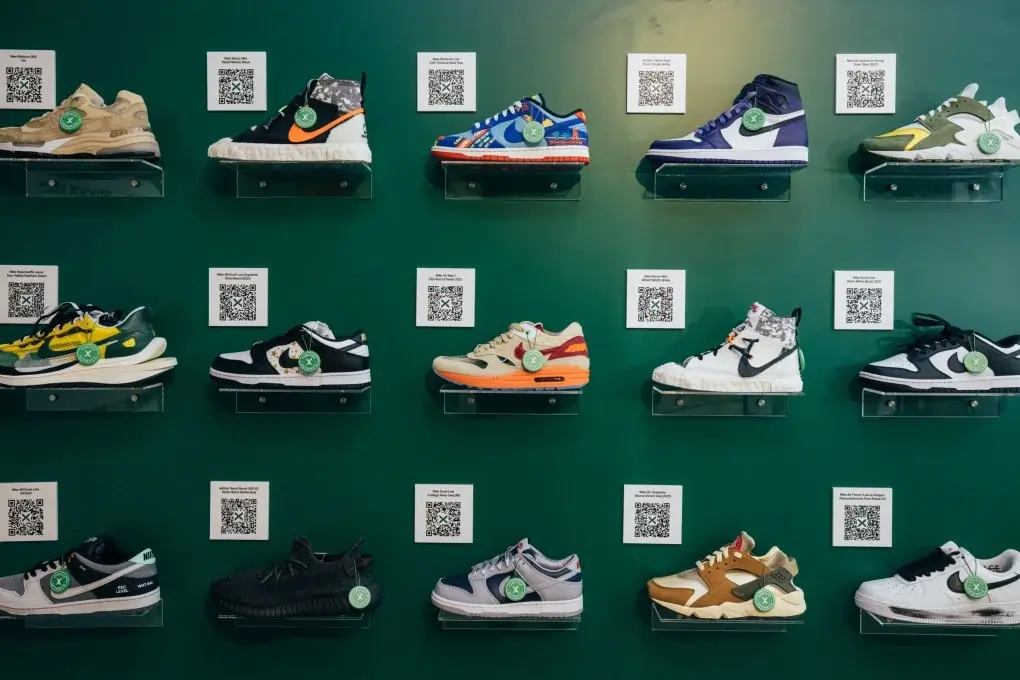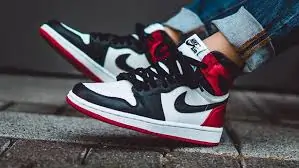Fake Shoes Vs. Reps Shoes sneaker industry has witnessed significant growth over the last decade, transforming from a niche market to a global phenomenon. This boom has been accompanied by the rise of counterfeit goods, including “fake shoes” and “replica (reps) shoes.” While these terms are sometimes used interchangeably, they represent distinct categories in the world of unauthorized footwear. This article explores the differences between fake and rep shoes, their appeal, and the ethical and economic implications of their popularity.
Defining Fake Shoes and Reps Shoes
Before diving into the comparison, it’s essential to establish clear definitions:
- Fake Shoes: These are cheap imitations produced with the sole intention of mimicking popular branded footwear. They often feature glaring inaccuracies in design, materials, and branding, and their quality is typically subpar. Fake shoes aim to deceive consumers by appearing legitimate at first glance but fall short upon closer inspection.
- Reps Shoes (Replicas): Replicas are higher-quality imitations designed to closely resemble authentic sneakers in both appearance and construction. While they are still unauthorized, reps often use better materials and more precise craftsmanship. Enthusiasts argue that reps shoes are almost indistinguishable from the real thing, making them a popular alternative for those unwilling or unable to pay the high prices of authentic sneakers.
Quality Comparison: Fakes vs. Reps
The quality gap between fake and reps shoes is significant, influencing their appeal and marketability.
- Material:
- Fake shoes are made using inexpensive, low-grade materials. They might look similar to authentic sneakers initially but degrade quickly with wear.
- Reps shoes use higher-quality materials, sometimes even approaching the durability and comfort of the originals.
- Craftsmanship:
- Fakes often have visible flaws such as uneven stitching, poor alignment, and inaccurate branding. These flaws make them easy to spot for experienced buyers.
- Reps are crafted with attention to detail, often incorporating advanced manufacturing techniques to replicate the intricate designs of authentic sneakers.
- Performance:
- Fake shoes typically lack the comfort and functionality of authentic sneakers, making them unsuitable for serious athletic use.
- Reps, on the other hand, can sometimes perform similarly to genuine sneakers, depending on the model and manufacturer.
Price Points: Accessibility vs. Investment
Price is a key factor driving the popularity of both fake and reps shoes, albeit for different reasons.
- Fake Shoes:
- Fakes are the cheapest option, often available for a fraction of the price of authentic sneakers. This affordability makes them appealing to casual buyers who prioritize looks over quality.
- Reps Shoes:
- Reps are more expensive than fakes but still significantly cheaper than genuine products. For example, a pair of authentic sneakers retailing for $200 may have reps versions priced around $100 or less, offering better value without the exorbitant price tag.
The Appeal of Fake and Reps Shoes
The rising popularity of fake and reps shoes stems from several factors, including affordability, accessibility, and the desire to stay on-trend.
- Affordability: Many consumers are unwilling or unable to spend hundreds or even thousands of dollars on authentic sneakers. Reps and fakes provide a budget-friendly alternative for style-conscious buyers.
- Accessibility: Limited-edition sneakers are often sold out within minutes of their release, making them nearly impossible to purchase at retail prices. Reps and fakes allow buyers to own a version of these coveted designs without competing in the high-stakes resale market.
- Social Pressure: Sneakers have become a status symbol in contemporary culture, with certain models signaling wealth, taste, and membership in exclusive communities. Reps and fakes enable individuals to partake in this culture without the financial burden of purchasing authentic products.
- Ethical Stance: Some consumers argue that the resale market exploits buyers by inflating prices, making reps a form of resistance against this perceived greed.
Ethical and Legal Considerations
While fake and reps shoes may be appealing, they raise complex ethical and legal questions.
- Copyright Infringement: Both fakes and reps infringe on intellectual property rights, as they replicate protected designs and branding without authorization. This undermines the original creators’ efforts and can lead to legal consequences for manufacturers and distributors.
- Consumer Deception: Fake shoes often deceive unsuspecting buyers into believing they are purchasing authentic products, eroding trust in the marketplace.
- Economic Impact: The counterfeit market siphons revenue from legitimate businesses, potentially affecting jobs and stifling innovation in the sneaker industry.
- Ethical Consumption: Some argue that purchasing reps, while technically illegal, is less ethically fraught than buying fakes. This is because reps are often openly marketed as replicas, ensuring buyers are aware of what they’re purchasing.
The Role of Social Media
Social media platforms have played a pivotal role in the proliferation of fake and reps shoes. Influencers and online communities dedicated to sneaker culture often showcase these products, normalizing their use and fostering acceptance. Additionally, online marketplaces and direct-to-consumer platforms have made it easier than ever for buyers to access unauthorized footwear.
Authentic Brands vs. Counterfeit Markets
Brands like Nike, Adidas, and Jordan are waging an ongoing battle against counterfeit markets. They employ advanced technologies such as RFID tags, blockchain authentication, and unique design elements to deter counterfeiting. However, as counterfeiters become more sophisticated, the challenge continues to grow.
To maintain their competitive edge, brands are also emphasizing exclusivity and storytelling, fostering deeper emotional connections with their customers. By offering unique experiences and collaborations, they aim to distinguish authentic products from their unauthorized counterparts.
How to Spot Fakes and Reps
For buyers seeking authentic sneakers, distinguishing between real, fake, and reps shoes is crucial. Here are some tips:
- Check the Price: If a deal seems too good to be true, it probably is. Authentic sneakers rarely sell far below their retail price unless they’re heavily discounted by reputable retailers.
- Examine the Details: Pay close attention to stitching, branding, and materials. Authentic sneakers often have a level of precision that fakes and reps struggle to match.
- Research the Seller: Buy from authorized retailers or trusted resellers with a proven track record.
- Use Authentication Services: Many third-party services specialize in verifying the authenticity of sneakers, providing peace of mind for buyers.
Conclusion
Fake and reps shoes occupy distinct niches within the unauthorized footwear market, catering to different consumer priorities. While fake shoes offer affordability, their poor quality and ethical concerns make them a less attractive option for discerning buyers. Reps shoes, with their emphasis on quality and authenticity in appearance, appeal to budget-conscious sneaker enthusiasts seeking an alternative to high-priced originals.
Ultimately, the decision to purchase fake or reps shoes comes down to individual values and priorities. As the sneaker industry evolves, so too will the dynamics of its counterfeit market, ensuring this debate remains a hot topic among consumers, brands, and policymakers alike.


